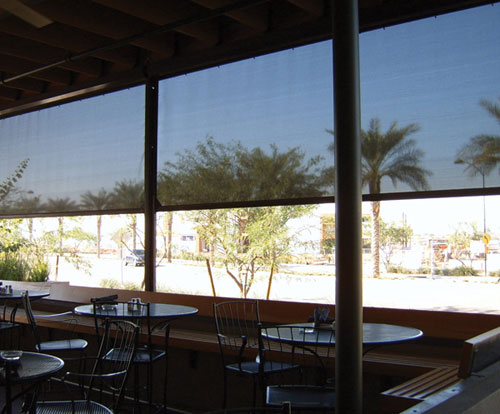Comfort on Demand
California Title 24 energy regulations were updated in 2008 with new building energy efficiency standards that require day-lit areas near windows for some types of buildings, and expand the definition of daylit area and the requirements for daylighting controls and sensor requirements to include smaller buildings. Retractable screens may have applicability here (see Section 131).
In 2008, the American Institute of Architects (AIA) launched its "Walk the Walk," campaign to educate, promote and encourage sustainable design among consumers, business owners and architects. A key part of this multifaceted program is 50 to 50, a resource to assist architects move toward AIA's goal of a minimum 50 percent reduction of fossil fuel consumption in buildings by 2010 and carbon neutrality by 2030. Retractable screens have applicability in the following 50 to 50 categories:
- Daylighting
- Efficient Artificial and Site Lighting
- Natural Ventilation
- Open Active, Daylit Spaces
- Smart Controls
- Sunshading
- Windows and Openings
| Motorized, Retractable Screens: LEED Potential |
Motorized retractable screens have the potential Energy and Atmosphere Indoor Environmental Air Quality |
Â
Retractable screens offer solutions in several of the LEED-NC v3 categories. Reducing energy consumption and related carbon emissions is the most important criteria within the USGBC LEED rating systems, and the Optimization of Energy Performance category (EA Credit 1) is the highest single area for achieving LEED points on a project. Credits are earned for reducing energy use - and with their ability to reduce daytime glare and the amount of air conditioning required to cool building interiors, retractable screens offer potential to contribute to LEED credits in several areas.
 |
Retractable screens provide natural ventilation and insect protection to diners. Photo courtesy of Phantom Screens |









